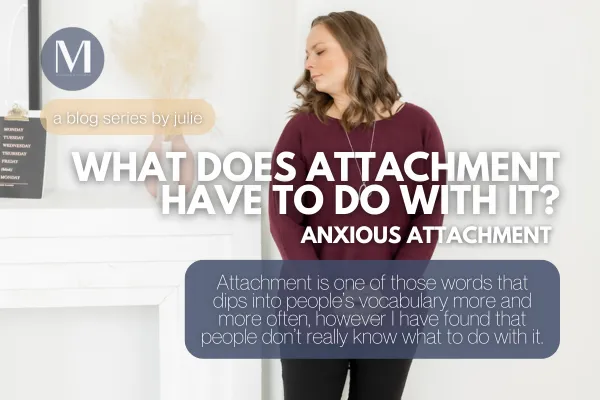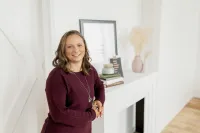the blog
A place for our team to share about topics they are passionate about, in hopes of allowing you to see and understand a bit more behind the faces on these pages.

What Does Attachment Have To Do With It? Anxious Attachment
What is Attachment?
Attachment is one of those words that dips into people’s vocabulary more and more often, however I have found that people don’t really know what to do with it. Let’s explore attachment and then dive into what we do with the information.
There are 5 different types of attachment that fall under 2 categories: Secure and Insecure. The 5 types of attachment are:
Anxious-Preoccupied (Anxious)
Avoidant-Dismissive (Avoidant)
Disorganized-Fearful/Avoidant (Disorganized)
Secure
Earned Secure
So what does this mean and where do we start? Let’s start with the first type - Anxious - as it seems to be the easiest one for people to see in their lives and others.
Anxious Attachment refers to a way of relating to other people that typically looks like a strong need for closeness, fear of abandonment, and worry about the longevity of a relationship. Individuals with an anxious attachment style often look for reassurance in their relationships, worry about rejection and pursue the individuals who they feel might be withdrawing.
I want you to imagine a friend or partner who normally answers your texts or phone calls right away, all of a sudden not responding within a few seconds or minutes. You pause for a moment and have a quick thought about them avoiding you. You try messaging or calling them again a few minutes later and again they don’t respond right away. Your mind starts to go faster wondering if they’re ok or if they’re avoiding you. Now you feel anxiety start to increase. You’re worrying about whether they’re going to leave, if there is something wrong, or they’re thinking about not being friends or romantically connected anymore. There is this pervasive fear starting to take over. This fear of abandonment and rejection really starts to become strong.
This is just an example of what an anxious attachment style might look like. Not all anxious attachment styles will present this way, but there are often similarities between the drive for connection. This attachment style often begins in early, early childhood experiences (0-5 yrs of age) and develops where the caregivers are not consistently available to respond to a child’s needs. These needs can be mental, emotional, or physical. When this happens, it can develop into a fear of being abandoned, rejected, and not seen or heard in relationships. We often see this show up in relationships where someone is continuously seeking reassurance from their friends or partners.
Anxious Attachment trauma comes from these experiences where you’re needing to be connected, and longing for the safety in the relationship and this need is not being met. When this need is not met consistently and there is a constant feeling of being left on your own, trauma happens. It may not be a big experience, but it can be lots of small experiences that build over time to this pervasive traumatic reaction due to lots of pervasive moments.
At the core, an anxious attachment style deeply wants connection with others, and to know that they are safe in that relationship mentally, emotionally, and physically. If you’re wanting to explore your attachment style and how it’s impacted and impacting your life, feel free to connect with us, we’d love to chat with you.
Office Location: 1200 Brock Street South, Whitby, ON. L1N 4L9
© Marquis Counselling & Consulting | ALL RIGHTS RESERVED | TERMS & CONDITIONS | PRIVACY POLICY

